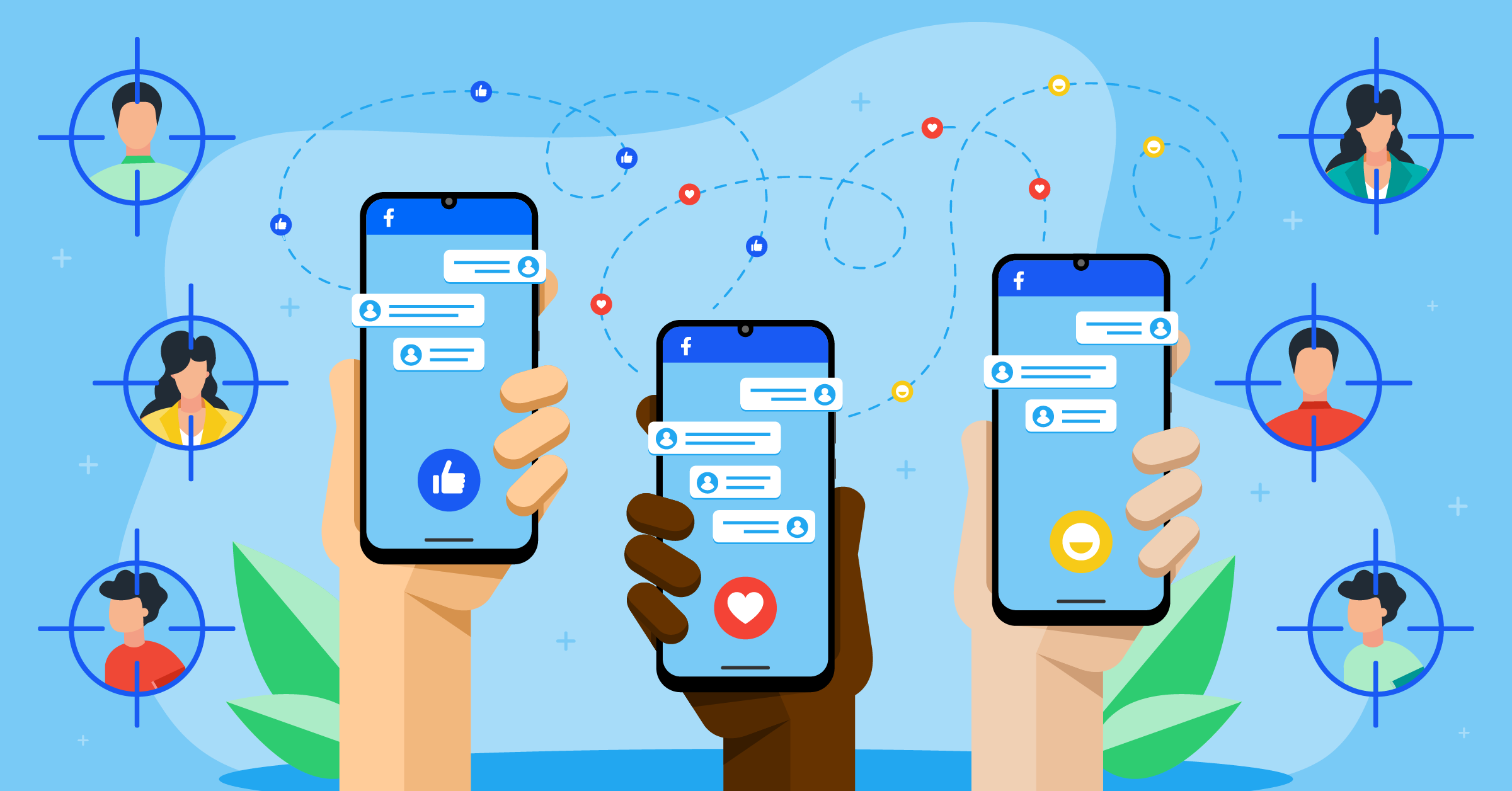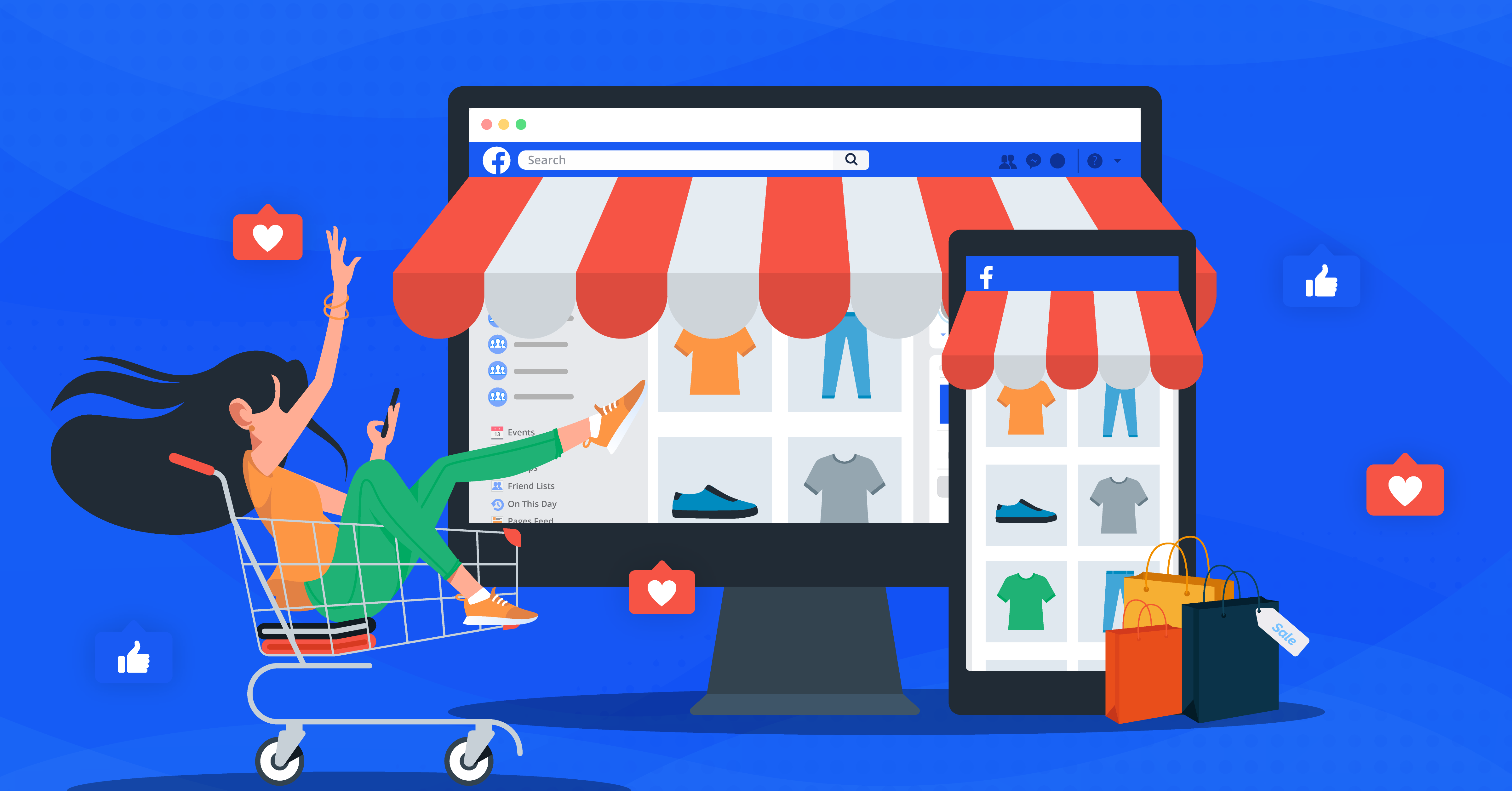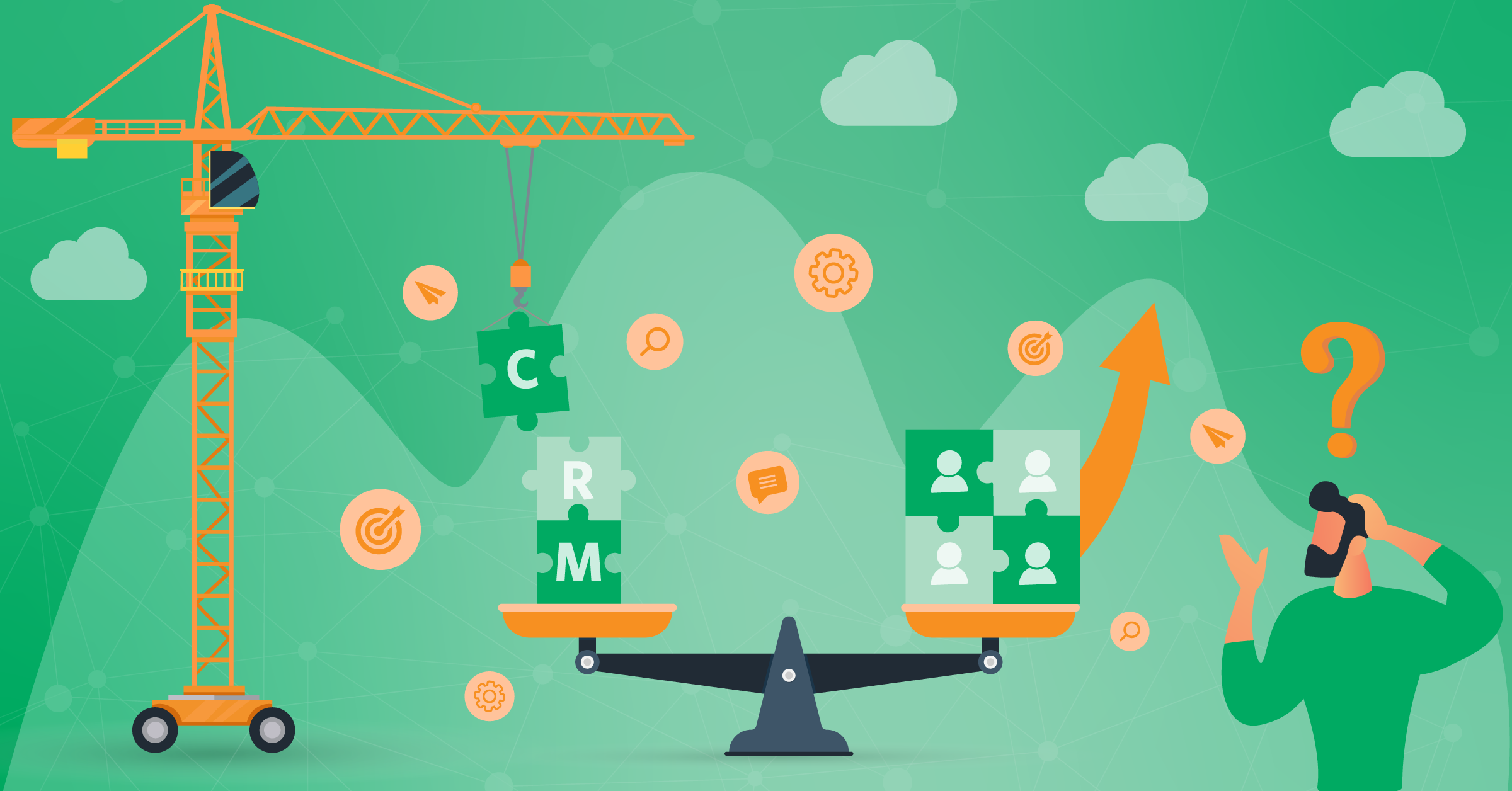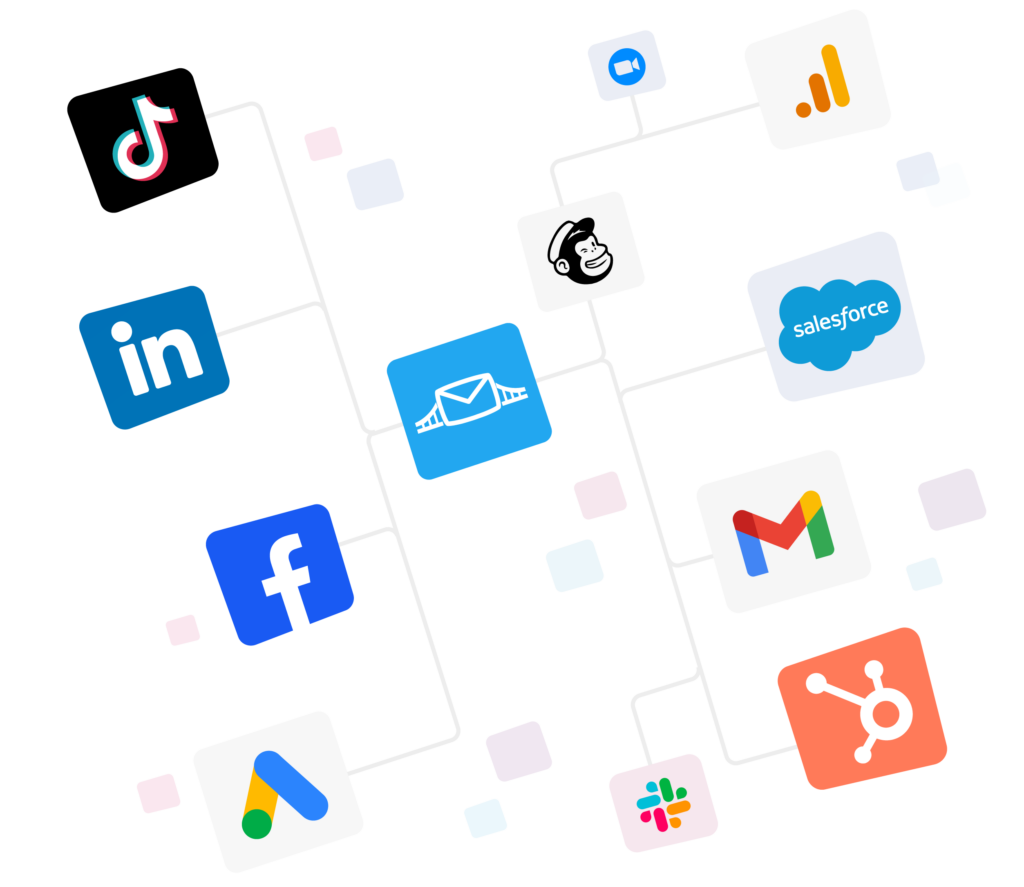
Paid search and paid social work best when you use them as complementary advertising devices.
But how to pick the right one for a certain campaign?
And how to divide your ad spend so that you don’t burn your budget?
You need to know about the top platforms and how they compare: Google Ads vs. Facebook Ads.
- Google Ads vs. Facebook Ads: Demand capture & demand creation
- What is each platform best at?
- Google Ads vs. Facebook Ads cost in 2026
- Facebook vs. Google Ads: Pros and cons
- Facebook vs. Google ads: How the auctions really decide your costs
- What to use each platform for
- How automation enables your advertising on both platforms
- Final thoughts
In this article, we’ll break down how Google Ads and Facebook (Meta) Ads actually work, where each wins, and what they really cost in 2026.
Also, we’ll cover how you can set up your stack so your data management runs on autopilot using integrations:
Google Ads vs. Facebook Ads: Demand capture & demand creation
Google Ads appear when someone actively searches (“emergency plumber near me,” “best payroll software”). Every search query triggers an auction.
But the ad placement depends on your Ad Rank. The rank is actually a mix of things: Your bid, your ad creative and landing page quality, its context, and other Google ad campaign structures you’ve configured.
This is to say, higher quality can beat higher bids.

Facebook lead ads appear in feeds and stories to people based on who they are and what they’re likely to do.
Meta’s ad auction looks at your bid and then how likely someone is to take action. Based on these, it then determines the quality of your ad.
So the winning ad is the ad that gives the most value overall.
What is each platform best at?
Let’s take a closer look at Google Ads vs. Facebook Ads in terms of quality:
What do Google Ads do best?
A Google Ad gets high-intent clicks.
This includes placements on Search, Shopping, YouTube, Discover, as well as Gmail. Additionally, features like Performance Max enhance your reach by directing your campaign more closely toward your conversion goal.

If you follow Google Ads best practices, you can get great control over query targeting and analytics.
You’ll get remarkable insights into what your audience is literally looking for. This includes both search terms and conversion imports, as well as Customer Match for first-party audiences.

Google Ads also has its limitations. For instance, there’s a ton of (budget-related) pressure in competitive verticals. Some Google Ads example niches include legal, dental, and other high-stakes markets.
You cannot do much in terms of storytelling in Search. Text ads still win intent. More creative ads do better on YouTube and Display.
Take a look at this Google Ads optimization checklist before you move ahead.
What do Facebook Ads do best?
First and foremost, there are Meta Ads’ massive reach with rich creative. Feed, Stories, Reels, and Advantage placements reward scroll-stopping creative.
The entire algorithm is trained to favor quality over quantity. The ads with higher relevance and predicted action get lower costs and better placements, so there are more of them.
The next best thing about Facebook Ads is its audience modeling. Lookalikes and interest, and behavior signals are really strong.
And if you are using Conversions API to pass server-side conversion signals to the platform, your targeting can become significantly sharper.
On Meta, the key consideration is lead quality. Lead forms reduce friction but can also increase the number of random (low-intent) submissions.
Conversion Leads optimization helps by using signals from your CRM (for example, qualified lead or closed deal) so Meta can optimize delivery toward people who are more likely to become high-quality leads.
Google Ads vs. Facebook Ads cost in 2026
We are not oracles here to talk about futures set in stone. However, 2025 benchmarks can give us an idea:
Based on 2025 benchmarks and about 4% media inflation, the 2026 outlook is as follows:
- Google Search CPC $2.70–$3.10
- Display CPC $0.62–$0.70
- Facebook CPC $0.62–$0.72
- Facebook CPM $10.4–$15.6
- Instagram CPM $9.8–$10.8
Facebook vs. Google Ads: Pros and cons
- Google Ads pros
People who are deliberately searching for things are often ready to buy them, so sales on Google move faster.
The platform offers great advertising features, too. For instance, Performance Max hits the whole Google network (Search, YouTube, Discovery ads, Gmail, Maps).
You can target lookalikes or your own customer lists with Customer Match, given that you’ve connected Google to your databases.
And if you want to jump right into your data bridge building, here’s how to connect your favorite CRM to Google Customer Match.
- Google Ads cons
The main issues advertisers have with Google are the click costs, which keep rising in crowded niches. If you are not that experienced, one misstep in the setup can blow your entire campaign budget.
Additionally, standing out on platforms like YouTube requires you to have dependable video and display skills. Text ads are essentially useless in those instances.
- Facebook and Meta pros
Are Facebook Ads worth it? Its huge reach, of course, and its engaging ad formats make it so. The platform and its users love great ads, and so its algorithm boosts relevant creative.
Meta also often has a lower cost per click for many goals and strong lookalike targeting.
- Facebook and Meta cons
Lead quality can be an issue unless you feed back conversions (CAPI) and score leads. Facebook Ads best practices, which call for sending server-side signals, can also impact your attribution.
This means improving your optimization and getting you more accurate tracking through API implementation.
Facebook vs. Google ads: How the auctions really decide your costs
Google uses Ad Rank to decide if and where you show. What does that mean for your business?
Ad costs are recalculated every auction based on your bid, the quality of your ad and landing page, the search context, and the impact of your assets.
In simple terms, higher quality means you pay less per click and get better placement.
So to pay less, you need to align ad copy with the keyword and page, increase CTR, optimize page speed, and add assets (such as sitelinks and images).
Other cost control tactics on Google include:
- Grouping keywords by theme, write specific ads, and align landing pages to raise Quality and lower CPC.
- Focus on first-party audiences by layering Customer Match to prioritize high-value users and exclusions
- Measure what matters. Import offline conversions so bidding chases real revenue.
Again, you need an interconnected data technology stack to set this up.
How Meta ad costs get set
What Meta considers is your bid, how likely someone is to act, and the quality of your ad.
Your ad creative can signal user interaction via metrics like video views, clicks, form submissions, and purchases. If so, your ad can get cheaper delivery.
How to decrease your Meta ad costs:
- Run A/B tests on headlines, first seconds, and offers to find what actually stops the scroll.
- Choose the objective that matches your outcome, like Sales, Leads, or Traffic.
- Feed conversion events and lead scores back via pixel and CAPI, so the system learns who becomes profitable.
- Use Conversion leads optimization performance goal to shift your ad focus toward similar people over time.
What to use each platform for
Wondering how to distribute your campaigns? Here’s a general guideline:
- Running Lead Generation with limited SLAs (service level agreements)?
Start with Google Search to capture users who are ready to purchase. Add YouTube remarketing and Customer Match to your Google strategy to stay in front of known prospects and scale reach.
Use native or third-party integrations to connect your lead forms to your CRM. This allows your leads to sync automatically, making management and follow-up faster and more consistent.
- New market entry or category creation?
Start with Meta to build reach and educate the market. Instant forms are great for lead generation while keeping your cost per lead predictable enough for you to be able to run a forecast.
Connect CAPI to your CRM so the system optimizes toward qualified outcomes instead of raw volume.
- Work with ecommerce?
Run Google’s Performance Max to pick up on bottom-funnel demand.
Or, Meta helps you find new audiences and for dynamic retargeting that increases cart recovery, AOV (average order value), and even repeat purchases.
Using both platforms creates a balance between near-immediate revenue and ongoing demand.
Take a look at these high-performing Facebook Ad strategies for ecommerce here.
How automation enables your advertising on both platforms
There’s nothing like automation when it comes to lead data and managing it. Mostly because you scale much faster when your ad platforms and sales and marketing tools are connected in real time.
LeadsBridge is an official partner to both Meta and Google, built specifically for automating your advertising workflows.
Here’s what you can do with LeadsBridge integrations:
- Connect Meta lead ads to your CRM in real time. While not needing to download your leads manually, you’ll get to trigger notifications, score your leads, and sequences as leads come in.
- Implement Meta Conversions API. Send server-side lead and sales events back to Meta to optimize for quality and create a much better attribution system.
- Audience Sync (on both Meta and Google). Keep customer lists updated automatically for retargeting, suppression, and lookalikes.
- Integrate Google Ads Lead Forms with your CRM. Send your incoming leads from Google ad placements straight into your systems without having to do manual uploads.
Final thoughts
Google Ads wins on intent and scale, while Meta is great for reach and creative discovery. The best stack uses both.
However, without a robust data management system, all that you do to improve your leads, audiences, and conversions does little.
That’s what makes automated data management really important.































